On the southern edge of Shropshire, lies St Mary the Virgin’s Church in Bromfield, a former priory church just a couple of miles from the market town of Ludlow.
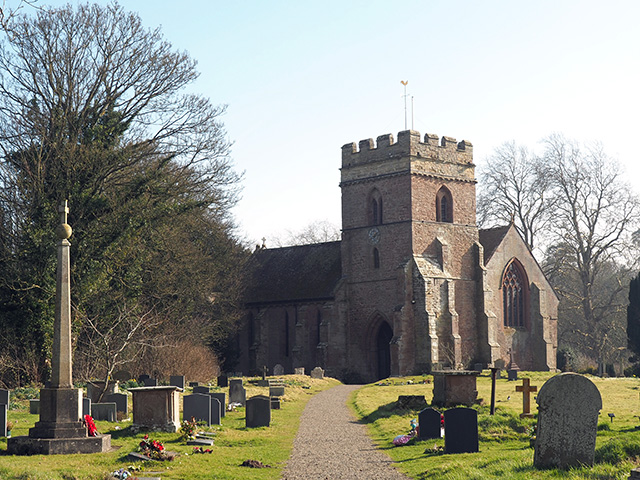
The origins of this church pre-date the Norman conquest in the 11th century. It was rebuilt in the 12th century and the present tower was built in the 13th century. Henry VIII’s Dissolution of the Monasteries saw the church and priory leased and then sold to a Charles Foxe who converted parts of the church into a house. The house was damaged by fire in the 17th century, but remains are still present at the south side of the church. The church was restored in the late 19th century and is still in use today.

I’m not religious, never have been, but there’s just something about churches and their history. Also, I find that church records and graveyards can provide a wealth of information when researching family history. Although none of my ancestors can be found here, it’s still an interesting place to visit.
At this time of year, much of the churchyard is carpeted in snowdrops, with some daffodils and crocus too, but perhaps the most beautiful part of this church can be found inside rather than outside.

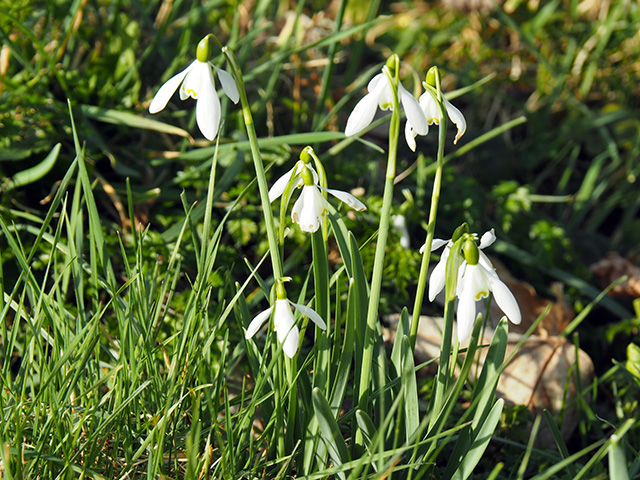


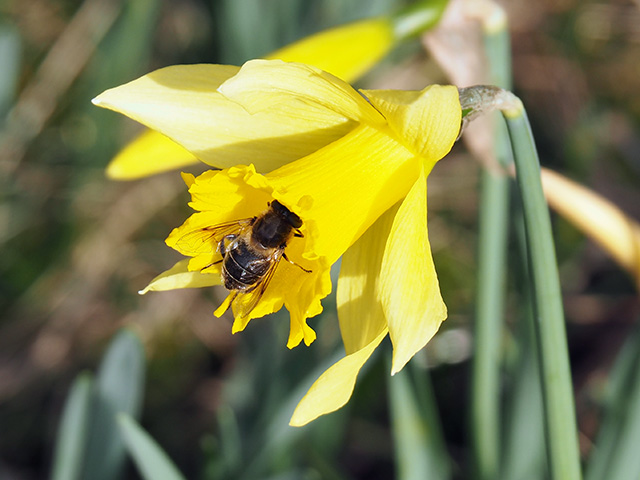
Upon entering the church, you cannot fail to notice the painted chancel ceiling. It was painted in 1672 by Thomas Francis and depicts the Shield of Trinity surrounded by biblical text, cherubs and angels on a cloudy background.





Back outside, the Priory Gatehouse stands at the west wall of the churchyard. The gatehouse is a medieval stone and timber-framed building and is now in the hands of The Landmark Trust for use as holiday accommodation (yes, you can stay there!).
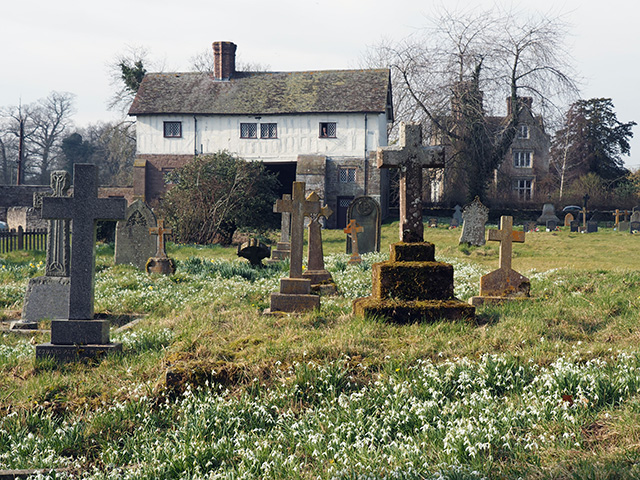
There are plenty of things to do nearby. If you’re hungry, I’d recommend crossing the A49 and visiting Ludlow Food Centre (I sometimes pop in for lunch if I’m in the area and actor John Challis a.k.a Boycie is a frequent visitor too). The town of Ludlow (described by John Betjeman as “probably the loveliest town in England”) is just down the road, with Stanton Lacey (well known for its snowdrops), Stokesay Castle, Acton Scott Historic Working Farm, Berrington Hall and Croft Castle all just a short drive away.

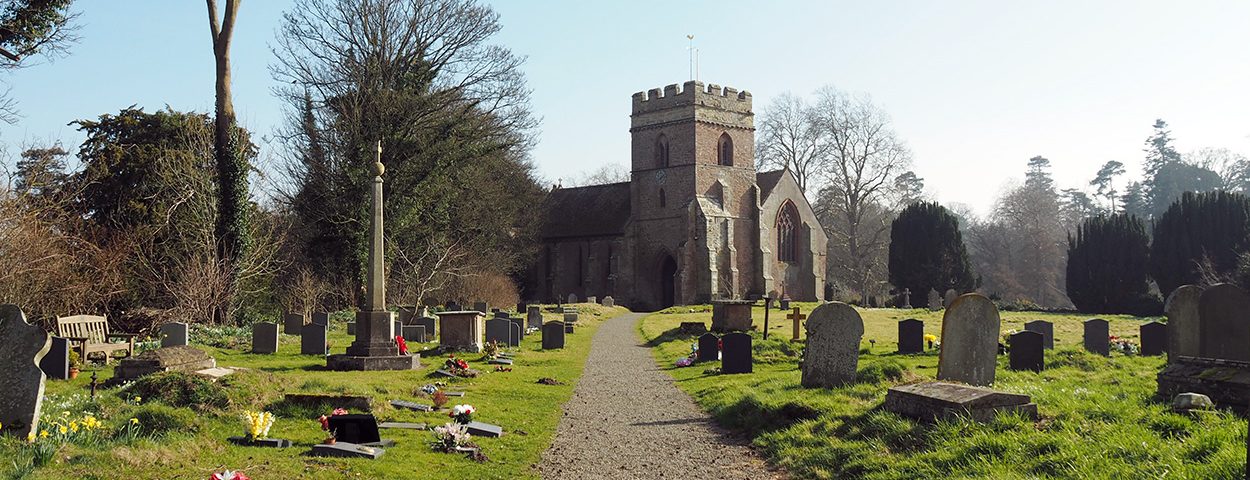
I too find old churches fascinating. Beautiful photos – thanks for taking me on a tour.
I think you know how much I enjoy church architecture (whether small chapels or large cathedrals), so I love all the photos you’ve shared in this post.
Cemeteries can be interesting places and the lovely blooms are an added bonus. I wasn’t expecting that gorgeous artwork inside the church – quite impressive. I think it would be great fun to stay at the gatehouse!
What a beautiful church, and that stained glass window, fabulous. I too find churches and their history fascinating and I love looking around the churchyard too.
I love really old churches with beautiful murals and wonky gravestones. Lovely shtos.
I’m not religious but I am a Christian and the church I now go to is a brand new building. Ultra modern. 😀 I do appreciate old buildings (I have to, I’m living in one) but I prefer modern.
We have snowdrops too! Aren’t they beautiful? Great photos.
Hi Nikki,
Your pictures look pretty much like those hubbie took when we were out and about today, even down to the bees in amongst the crocus and snowdrops.
On the weekends we have another job with ‘Treasure Trails’ and we were visiting some of our most popular sites, making sure they are in tip top condition before Easter.
https://www.treasuretrails.co.uk/
We took pictures of Avebury church and cemetery, then on to Silbury Hill and Marlborough, where the cemetery is divided into old and new and where the old is full of some of those wonky gravestones, which have unfortunately not stood the test of time so well.
With blue skies, wall to wall sunshine and definitely not a coat in sight, it has been a February day to remember.
The inside of St. Mary’s is lovely and I am always particularly drawn to the stained glass, as my uncle was trained in the art and owned his own business in the US, working right up until his death last year. Before he and my aunt emigrated some 50 odd years ago, he served his apprenticeship in Kent and worked on one of the windows in Canterbury Cathedral.
The triptych you feature is certainly a tour de force and so beautiful. Definitely another place for our visiting list, thanks for sharing.
What a lovely day out you must have had 🙂
Yvonne
xx
What a lovely post and your photographs are just beautiful. As a gardener, I appreciate all the spring flowers, and as a history fan, I really enjoyed learning more about the church. (Ludlow was also the scene of a fierce battle during the Wars of the Roses). Thank you for sharing 🙂
Lisa | http://www.lisasnotebook.com
Love the church and the little gate house to stay in. Like you, I’m not religious, but fascinated about the history of churches. The ceiling is really interesting and is a bit surprising it was painted in late 17th century.
I always enjoy looking around churches. They are full of history and art. I like the look Bromfield church, I will have to check it out next time I am in the area.
I love the wide, sweeping view from the graveyard to the church. Those stain glass windows are priceless, probably literally. The triptych makes the altar quite uniqe.
I agree with you completely. There is something about churches, their history, their architecture that transcend one’s personal beliefs. This is a magnetic-looking place, with its graveyard (I’m a sucker for old graveyards, too) and pastoral location. Thanks for sharing it.
And thanks for coming over to my spot this week! Always nice to see you there.
I love all the spring flowers on the graveyard! It’s like a contradiction, but is a symbol for life.
Gorgeous place!
Like you, I’m not religious, but do agree churches and the surrounding lands can be beautiful peaceful places to visit! x
I understand that Lady Clive is buried here, although “Find a grave” for this Church says that it has no record.
Her Son the 1st Earl of Powis is.
I wonder why she was not buried with her Husband ( Clive of India) at Moreton Say.
Picture of Her grave would be nice